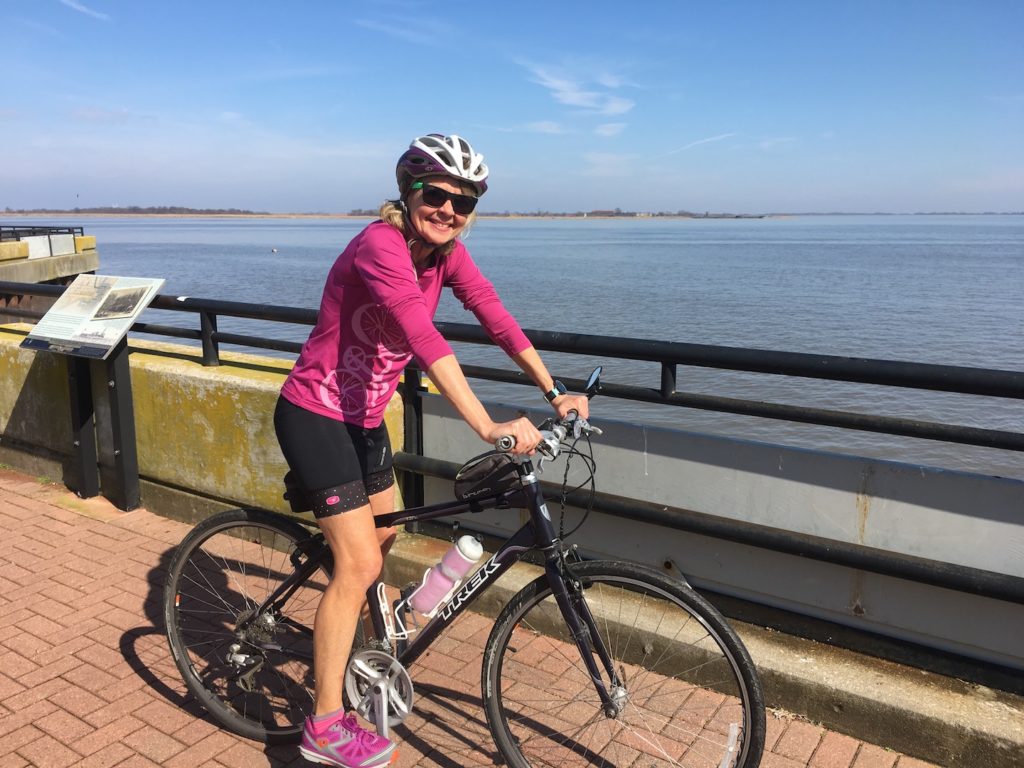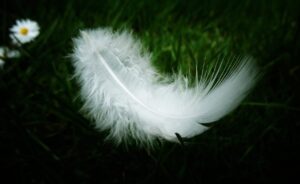By Diane Kukich
 Although 2017 started off as a great running year for me, it didn’t end that way.
Although 2017 started off as a great running year for me, it didn’t end that way.
My February birthday marked the beginning of a new age group, along with the promise of first-place finishes and even the potential for state records.
Late in 2016, I had signed up to run the Shamrock TowneBank 8K in Virginia Beach in March, and early in 2017 I learned that the race was designated the National 8K Masters’ Championship. I was excited about the event and our weekend away, so when my left heel started hurting in February, I just ignored it and kept training.
The race went better than my wildest dreams—I came home with two silver medals, one for a second-place finish and the other for an elite performance based on an age-grade score.
But I also came home with a very sore heel. Again, I tried to ignore it because I had another important race coming up in two weeks: a five-miler where I would have a chance to break the Delaware state record for women in the 65-69 age group.
I ended up breaking the record by 77 seconds, but I paid the price with severe pain in my heel. Over the next two months, I had several ultrasound treatments for what my doctor and I both thought was plantar fasciitis, but the pain didn’t go away.
Finally, in July, an MRI showed that I had a torn plantar fascia as well as a possible fracture of the heel bone. My great running year had come to a screeching halt. The doctor—a runner himself and very sympathetic to the plight of injured runners—told me that a tear like mine would take 12 to 16 weeks to heal.
Running and walking were out, so for four months, I swam or biked every day. In mid-October, I was cleared to walk, and by early 2018, I was back to running, although I had lost a lot of my speed.
But I learned a lot from my injury, and WeRunWithYou has invited me to share some advice from that experience:
- Have alternatives. Swimming and cycling fended off the depression, weight gain, and loss of fitness that probably would have resulted if I had done nothing for four months.
- Keep your mind open to new opportunities. If I had been able to run last summer, I wouldn’t have discovered a beautiful new bike trail in our area that I continue to ride once or twice a week.
- Stay involved by volunteering. I worked as a bike marshal at several local races while I was injured, which not only kept me in touch with the running community but also allowed me to give back to a sport that has enriched my life for the past 17 years.
- Never take for granted the gift of movement. Not being able to run for more than six months gave me new appreciation for just being able to get out there and do it.
- Pay attention to minor aches and pains, so they don’t become major injuries.
 This last lesson recently came to my rescue when I found myself registered for two races in one weekend. After Saturday’s 8K, a slight twinge in my left heel convinced me to attend Sunday’s race not as a runner but as a support person for a group of women I had been coaching throughout the spring. I ended up having more fun cheering my students on as they finished their first 5K than I would have if I had run.
This last lesson recently came to my rescue when I found myself registered for two races in one weekend. After Saturday’s 8K, a slight twinge in my left heel convinced me to attend Sunday’s race not as a runner but as a support person for a group of women I had been coaching throughout the spring. I ended up having more fun cheering my students on as they finished their first 5K than I would have if I had run.
A fellow runner that I know only through social media fractured her hip when she was tripped in a race a few months ago. During the weeks she spent in an in-patient rehabilitation center, she worked hard at all of the exercises she was given, and she posted nothing but praise for the entire experience—from the therapists and the workouts to the food and facilities. Just three
weeks after she was released from rehab, she walked 14 miles of an international marathon, quitting only when course security was shut down. I’m convinced that her positive attitude got her through a serious injury and back on the road.
In his book Run Forever, 1968 Boston Marathon winner Amby Burfoot shares the story of a man named Herb Fred, who holds the record for the most miles run in a lifetime. When he was in his sixties, Fred was hit by a car while running, so he switched to treadmill running. At 87, he fell off the treadmill but was undeterred—he bought a recumbent bike and rode it for almost three hours the first day.
Fred exemplifies the gift of movement. “Why would I stop exercising now when it has served me so well for so many years?” he asks. “It has kept me physically and mentally strong.”
Injuries are almost inevitable for those of us who are active. But we don’t have to let them rob us of the gift of movement. Instead, we can seek new opportunities and keep going in a way that will allow us to heal both mentally and physically.
As Burfoot writes in his last chapter, “Switch if you must. But don’t quit.”

Diane Kukich
Diane is a retired science writer. She holds a senior fitness training certificate from the University of Delaware and a Level 2 Running Coach certification from Road Runners Club of America. She started running in her late 40s and has won hundreds of first and second place age-group awards in local, regional, and national races at distances from the mile to the half marathon. She swims, runs, or bikes every day and strength trains twice a week. Diane lives in Newark, Delaware, with her husband, Doug, her yellow Lab Jodie, and her orange tabby Pax.




